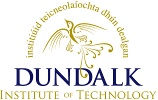Jordan, Siobhan N. and Mullen, George J. and Courtney, Ronan G. (2009) Metal uptake in Lolium perenne established on spent mushroom compost amended lead-zinc tailings. Land Degradation and Development, 20 (3). pp. 277-282. ISSN 1085-3278
|
Microsoft Word
- Submitted Version
Download (107kB) |
Abstract
A greenhouse trial was performed to contrast the growth and metal accumulation in Lolium perenne established on pyritic tailings amended with varying applications of spent mushroom compost (SMC). The lead-zinc tailings were retrieved from a moderately vegetated land impoundment facility located at Gortmore, Silvermines, Co. Tipperary and SMC was incorporated at application rates of 0, 50, 100, 200 and 400 t ha-1. The grass species Lolium perenne was sown at an application rate of 200 kg ha-1 and the subsequent biomass determined after 42 days and 84 days. For the most part, metal concentrations in Lolium perenne showed a significant linear response (P<0.05) to SMC application and generally decreased favorably with increasing SMC application (P<0.05). This phenomenon may be attributed to the vast biosorption capacity of SMC owing to the presence of phenolic, carboxyl and phenolic functional groups, the development of stable metal chelates by the organic matter present in SMC and/or by the biosorbing of toxic metals by fungal mycelium, however this reduction in metal uptake by Lolium perenne is most likely due to greater plant dry weight caused by the increasing SMC applications. In spite of this, Lolium perenne suffered severe toxicity resulting from the inherently high concentrations of total zinc (1443 to 5920 mg kg-1), lead (33 to 478 mg kg-1) and cadmium (1.4 to 49 mg kg-1) accumulated within the plant 84 days after seeding, the grass had adversely withered irrespective of SMC application. Therefore, a barrier break must be introduced in the tailings facility to prevent the uptake and accumulation of these lethal metal concentrations by plants. Only then should SMC and other suitable soil forming materials be utilized as growing media, as the incorporation of an organic amendment followed by direct seeding of a grass species is not economically or environmentally viable for permanent revegetation of the Gortmore TMF.
| Item Type: | Article |
|---|---|
| Uncontrolled Keywords: | Spent mushroom compost; Tailings; Metal uptake; Lolium perenne |
| Subjects: | Science |
| Research Centres: | Centre for Freshwater and Environmental Studies |
| Depositing User: | Concepta Woods |
| Date Deposited: | 07 Feb 2012 16:43 |
| Last Modified: | 11 Nov 2014 16:10 |
| URI: | https://eprints.dkit.ie/id/eprint/108 |
Actions (login required)
 |
View Item |
Downloads
Downloads per month over past year

